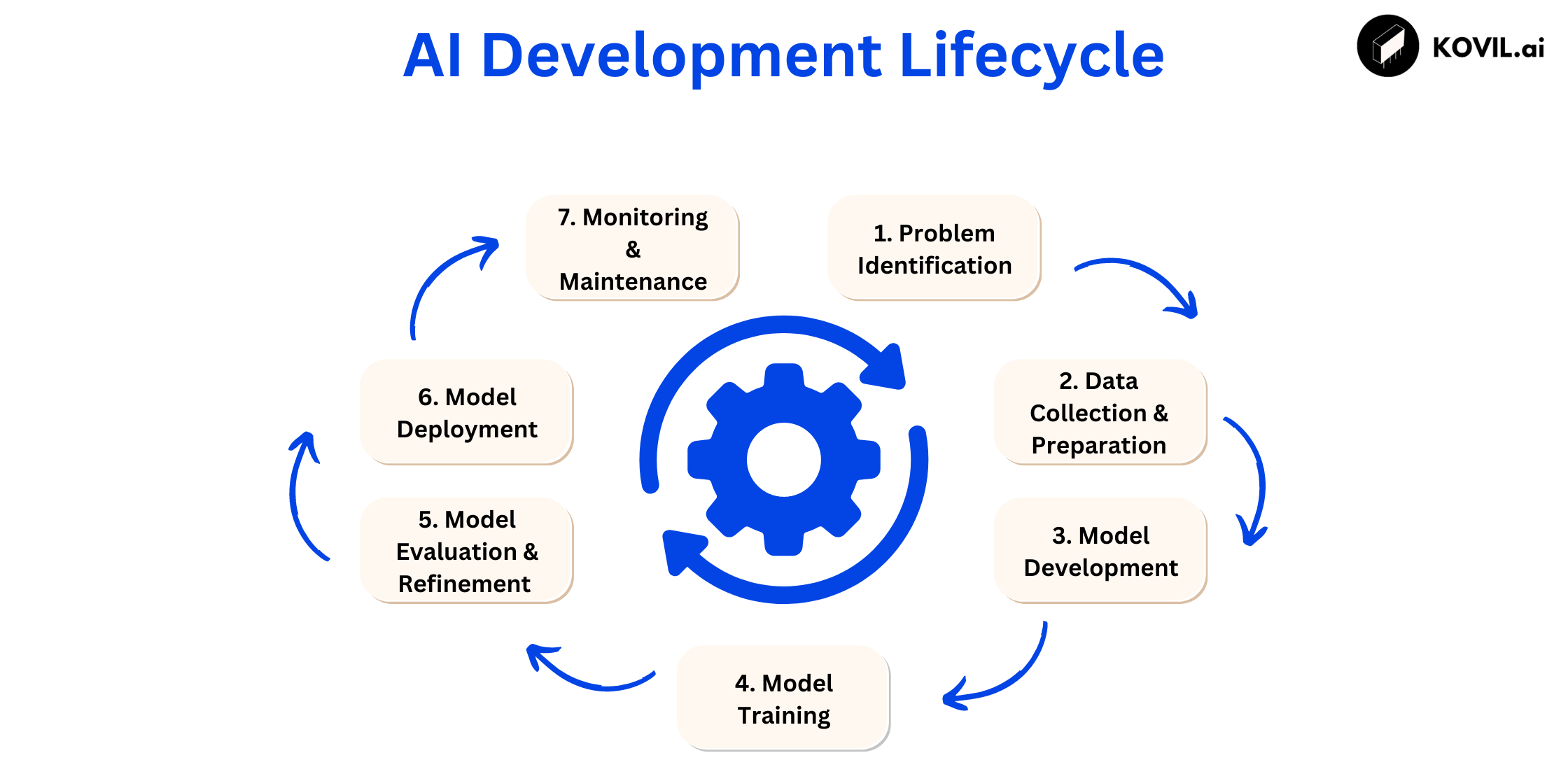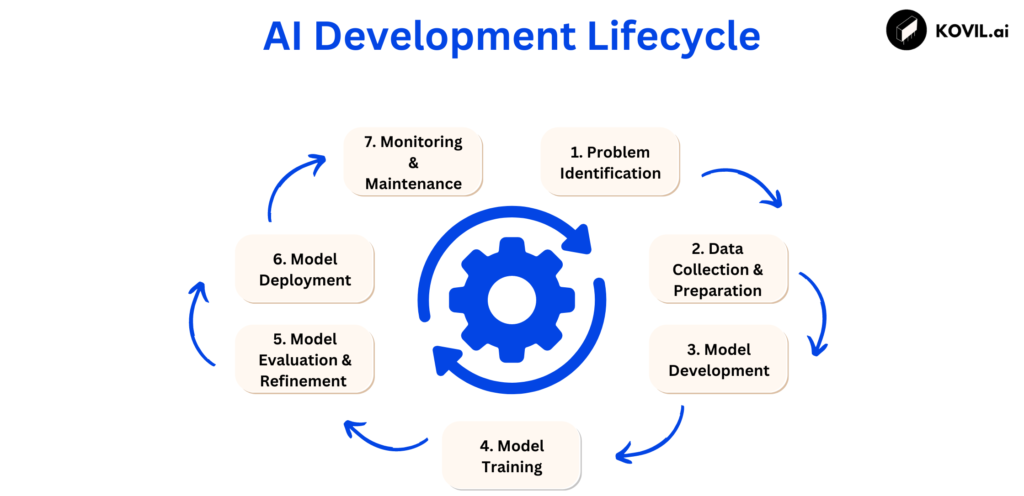Hire Top Class AI and Software Developers Offshore
- Home
- What is the AI Development Lifecycle?
What is the AI Development Lifecycle?

August 14, 2024 - Blog
What is the AI Development Lifecycle?
What is the AI Development Lifecycle?

Hire Remote Developers with Kovil.AI & Reduce Costs by 40%
Unlock the full potential of your AI projects with our elite Indian AI talent. From startups to leading SaaS companies, we ensure you have the expertise for success. Schedule a consultation today.
Step 1: Problem Identification
The initial and critical phase of the AI development lifecycle is problem definition. A well-articulated problem statement is the cornerstone for subsequent stages, guiding data collection, model development, and deployment decisions. Beyond problem identification, this phase entails a comprehensive feasibility assessment, including regulatory compliance, resource allocation, and potential market fit. An AI product manager plays a pivotal role in this process and throughout the AI lifecycle, providing strategic guidance and ensuring alignment with overall business objectives.
Step 2: Data Collection and Preparation
Step 3: Model Development
Step 4: Model Training
Step 5: Model Evaluation and Refinement
Step 6: Model Deployment
- Deployment Strategy: Based on latency, scalability, and security requirements, select the optimal deployment environment (cloud, on-premise, edge).
- Integration: Seamlessly incorporating the model into existing systems, applications, or workflows.
- Scalability: Ensuring the model can handle increasing workloads and data volumes without compromising performance.
- Handoff: Transferring necessary documentation and knowledge to the operations team for ongoing management.
- Monitoring: Implementing robust monitoring tools to track model performance, identify anomalies, and detect potential real-time issues.
Step 7: Monitoring and Maintenance
Hire Remote AI Project Manager
Kovil.AI connects AI startups and SaaS companies with top 3% pre-vetted AI/ML developers from India, matching you with the right talent within 48 hours. Propel your AI projects forward efficiently with expert support.
Conclusion
- Fast and Efficient Talent Matching: Find top-tier AI/ML developers within 48 hours.
- Pre-vetted Expertise: Access a curated pool of highly experienced professionals.
- Global Reach with Local Focus: Leverage India’s exceptional talent pool.
Learn more about our talent pool or schedule a call with us to know about our processes.

Get Matched with an AI Expert in 48 Hours
Tap into a pool of pre-screened AI professionals ready to advance your project. Get a 40% cost savings without compromising on quality. Contact us today to learn more.
Can your AI developers work on existing projects?
